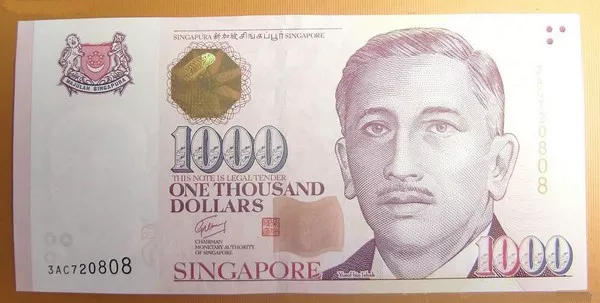In the realm of currency, the allure of rare and high-denomination banknotes has always captivated the interest of both collectors and investors. One such note that has sparked curiosity and speculation is the Singaporean S$1,000 note. As users seek confirmation of its availability, delve into its collectors’ interest, analyze its price and rarity, and compare it with other denominations, a comprehensive understanding of the dynamics surrounding this banknote emerges.
Confirmation of Availability:
Users, whether locals or visitors to Singapore, often inquire about the current status of the S$1,000 note. The Singaporean monetary landscape has witnessed significant changes over the years, with the Monetary Authority of Singapore (MAS) periodically reviewing and adjusting its currency denominations to meet evolving economic needs and combat illicit activities such as money laundering and counterfeiting.
As of the most recent data available, the S$1,000 note remains legal tender in Singapore. However, its circulation in daily transactions is exceedingly rare. The MAS has taken measures to limit the use of high-denomination notes in everyday transactions to mitigate the risk of financial crimes. Thus, while the S$1,000 note exists, its practical usage is largely confined to specific transactions or held by collectors.
Collectors’ Interest:
The announcement of the discontinuation of high-denomination banknotes often piques the interest of currency collectors. For enthusiasts, the rarity and historical significance of these notes add an irresistible appeal to their collections. The potential removal of the S$1,000 note from circulation would undoubtedly elevate its status in the eyes of collectors, driving up demand and, consequently, its market value.
Currency collectors view banknotes not merely as pieces of paper but as artifacts that encapsulate a nation’s history, culture, and economic evolution. The S$1,000 note, with its distinctive design and symbolism, represents a tangible link to Singapore’s financial heritage. Consequently, should the note be phased out in the future, its scarcity would enhance its allure among collectors, potentially leading to increased competition and higher prices in the secondary market.
Price and Rarity:
The intersection of scarcity and demand determines the value of any collectible, and the S$1,000 note is no exception. As of the latest assessments, the market price of the S$1,000 note varies significantly based on factors such as its condition, serial number, and historical significance. Mint-condition notes with low serial numbers or unique features command premium prices, appealing to discerning collectors seeking exclusive additions to their portfolios.
The rarity of the S$1,000 note stems not only from its limited circulation but also from its status as a high-denomination banknote. Unlike lower denominations, such as the ubiquitous S$50 or S$100 bills, the S$1,000 note is less commonly encountered in everyday transactions. This rarity amplifies its perceived value among collectors and investors alike.
Comparison with Other Denominations:
In discussions surrounding high-denomination banknotes, comparisons with other denominations inevitably arise. One notable point of reference is the discontinued S$10,000 note, which was phased out of circulation in 2014 as part of Singapore’s efforts to combat money laundering and financial crimes.
While the S$10,000 note held significant value due to its rarity and purchasing power, its discontinuation signaled a shift in Singapore’s approach to currency management. The decision underscored the MAS’s commitment to maintaining the integrity of the financial system and safeguarding against illicit activities.
In contrast, the S$1,000 note, while still in circulation, occupies a unique position in the spectrum of Singaporean banknotes. Its denomination strikes a balance between practicality and prestige, making it an attractive option for certain transactions and investment purposes. However, its future remains subject to regulatory considerations and evolving economic landscapes.
Conclusion:
The status of the S$1,000 note in Singapore embodies a convergence of historical significance, economic pragmatism, and collector intrigue. While its availability for everyday transactions may be limited, its allure as a collectible and investment asset endures. As users navigate inquiries regarding its confirmation of availability, collectors’ interest, price and rarity dynamics, and comparisons with other denominations, they gain insight into the multifaceted nature of this high-denomination banknote.
In the ever-evolving landscape of currency and finance, the fate of the S$1,000 note remains intertwined with broader considerations of monetary policy, financial security, and cultural heritage. Whether as a symbol of prosperity or a relic of a bygone era, its legacy endures, shaping narratives of value, scarcity, and the enduring allure of tangible wealth.
Related Topics:


























